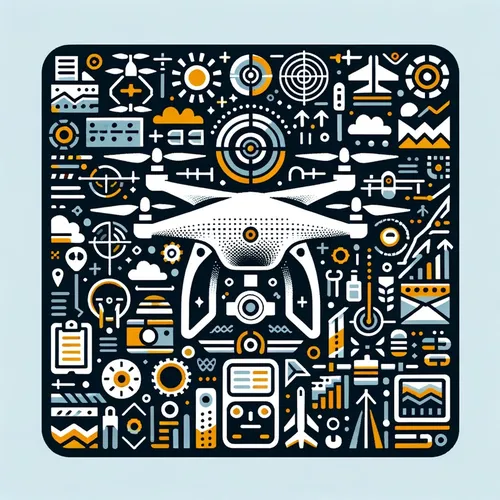Drone Pilots Soar in 2025: Radar Breakthroughs, FAA Shakeups, and Untapped Verticals
- Author
- Quiet. Please
- Published
- Fri 08 Aug 2025
- Episode Link
- https://www.spreaker.com/episode/drone-pilots-soar-in-2025-radar-breakthroughs-faa-shakeups-and-untapped-verticals--67298767
This is you Professional Drone Pilot: Flight Tips & Industry Updates podcast.
For commercial drone pilots, aerial photographers, and inspection specialists, staying at the forefront of drone technology and regulations is a daily requirement. Recent advances are redefining both the technical and business landscape, and 2025 is shaping up to be a pivotal year for professional operators. In the past few weeks, industry headlines highlighted a major leap forward as University of Texas at Arlington researchers unveiled a low-cost radar-based preventive maintenance system, which uses millimeter-wave radar to flag subtle mechanical issues before they lead to failures. Such innovations are vital, particularly as fleets age and mission-critical work becomes routine. Meanwhile, drone manufacturers continue to push flight endurance boundaries. According to DSLRPros, next-generation batteries now deliver up to thirty percent longer flights and smarter, AI-powered navigation systems are helping operators tackle missions in difficult environments with greater confidence. For inspection specialists and mapping professionals, this translates to fewer interruptions, cost savings, and improved safety.
Advanced flight technique is at the core of professionalism. Minimizing abrupt maneuvers, consistently using return-to-home protocols, and integrating AI-based waypoint navigation can drastically reduce crash risks and wear. Proactive attention to battery health, regular pre-flight sensor calibration, and firmware updates are everyday essentials—a small investment of time for long-term reliability. In the maintenance sector, market research group Archive Market Research projects a steady 5.3 percent annual growth for drone maintenance services through 2033, citing predictive maintenance and autonomous drones as catalysts for market expansion. The rise of drone-as-a-service providers offering bundled maintenance, insurance, and data analytics is creating new business opportunities and recurring revenue models for aviators.
On the regulatory front, United States Federal Aviation Administration rules require commercial operators to hold a Remote Pilot Certificate under Part 107, with recurrent online training every two years. Passing the aeronautical knowledge test remains foundational, covering evolving topics from airspace rules to crew resource management and weather decision-making. Staying current gives pilots credibility with clients and critical awareness of liability. Insurance providers are also upgrading policies: look for coverage that addresses cyber risk alongside traditional hull and liability concerns, especially if handling sensitive data or operating over populated areas.
Client relations are evolving as well. Transparent pricing based on mission complexity and deliverables, up-front disclosures about airspace limitations, and responsive communication set top-tier operators apart. To maximize profitability, explore untapped verticals such as agricultural analytics, wildlife monitoring, and infrastructure scanning, all of which are experiencing double-digit market growth in 2025.
Weather remains a perennial wildcard. Use real-time meteorological apps to assess wind shear, precipitation, and visibility before every launch. For high-value assignments, brief clients about possible delays linked to safety and regulatory constraints. Looking forward, fully-autonomous fleets, plug-and-play payloads, and advanced sense-and-avoid systems are on the horizon, promising to expand both the scope and safety of aerial work.
For practice, update your pre-flight checklists to include new maintenance diagnostics, review your FAA recurrent materials, and schedule quarterly client touchpoints to discuss emerging possibilities. Thank you for tuning in, and do not forget to return next week for more actionable insight. This has been a Quiet Please production—for more, visit Quiet Please...
